
Johns Hopkins UniversityEst. 1876
America’s First Research University
5 things you probably didn’t know about Ebola

1. At the start of the Ebola outbreak in West Africa, a maternity hospital was forced to close.
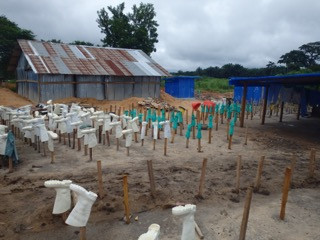
As one of the poorest countries in the world, Sierra Leone has one of the highest maternal mortality rates in the world; approximately 900 women die in childbirth per 100,000 live births. In comparison, the rate in the US is 21 per 100,000. To help reduce these preventable deaths, Doctors Without Borders/Médecins sans Frontières ran a maternity hospital near the town of Bo. Before the Ebola outbreak in 2014, they had more than 2,500 emergency obstetric and gynecologic admissions per year. They saved thousands of lives every year. In October 2014, they announced a suspension of services.
Without a maternity hospital many women and children would have likely died; not merely from Ebola, but from other conditions that went untreated due to the weak health system. A study published in the World Journal of Surgery helps to illustrate the massive need in Sierra Leone. The report compared Sierra Leone's hospitals in 2008 with US Civil War hospitals of 1864. The US hospitals were much better equipped, had power and running water, and could do amputations and abdominal surgery; the hospitals in Sierra Leone could not.
2. Surgical symptoms can be mistaken for Ebola
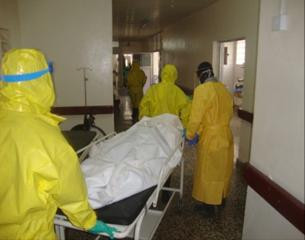
Although bleeding is what most people think about with Ebola, it is a late symptom of the disease. Ebola patients have an incubation period of 21 days and initial signs and symptoms can be nausea, vomiting, fever, and/or generalized aches and pains. Unfortunately, most of these are non-specific and are especially common in some surgical conditions. A bleeding stomach ulcer, an infected broken bone, a fever, or even malaria might be mistaken for Ebola.
According to the World Health Organization, during the 2014-15 Ebola outbreak there were 28,616 confirmed cases with 11,310 deaths in Guinea, Liberia, and Sierra Leone. What we do not know is the number of people who died or are permanently disabled because they could not get proper health care, including surgery, even though they were not infected with Ebola.
3. Two of the 10 surgeons in Sierra Leone died of Ebola during the outbreak
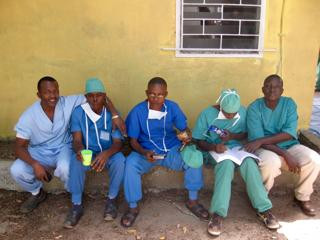
Prior to the Ebola outbreak in West Africa there were only 10 surgeons in Sierra Leone for a population of 6 million. Ebola caused the death of two of them, 20% of the workforce. The loss of these specialists severely impacted surgical care delivery, but also highlighted the massive need that existed prior to the outbreak. A study in 2008 quantified the surgical capacity of hospitals in Sierra Leone. Unsurprising to those who worked there, most hospitals had no running water, could not perform common procedures, had deficient infrastructure, and lacked basic equipment and supplies.
Ebola had a profound effect on the delivery of health care. It also was responsible for the deaths of many healthcare workers and created distrust between the population and the health system.
4. Despite the risks, it is possible to safely operate during an outbreak
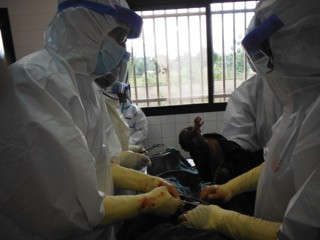
Although the prospects of providing surgical care in the midst of an outbreak seem daunting, surgeons and other healthcare workers were able to devise appropriate protocols and use protective gear to both provide safe care and remain safe themselves. It wasn't easy, but it was—and is—possible.
Lessons learned on staying safe while wearing personal protective equipment were:
- Don with a thought to how you will doff.
- Don and doff the same way every time.
- Don and doff correctly—have a safety person check your equipment and
- performance.
- Loosen the ties on your facemask and adjust them carefully, because you cannot readjust them once you are in a hot zone.
- Choose a suit that is snug enough to work in safely and loose enough to doff easily and safely.
- Use the packaging bag to cover your boots when you don so they slide into the legs of your PPE more easily and do not make small tears.
- Stretch the ankle elastic bands on the PPE so it comes off the boots more easily during doffing.
- Some PPE suits have finger loops—do not use them. Poke a small hole in the sleeve for your thumb to prevent a gap at the cuff.
- Wear long inner gloves so rundown doesn’t get inside your suit if your sleeves ride up.
- Try to use colored inner gloves so you can spot a tear more easily.
- Tie your apron’s neck up behind you so it covers up to your chin.
- Goggles are more secure but fog more quickly than a face shield.
- When sweat starts to pool in the sleeves of your PPE, periodically raise your arms so it runs down into your boots instead of into your gloves.
- If your mask becomes so filled with sweat that you begin to suffocate, tip your head back to let it flow out—drink it if you need to. Tongue the mask off your nose and break scrub.
- When you get sweat in your eyes, stay calm but step back from the table and shake it off.
- Do not operate if you cannot see. You must be able to see and avoid sharps.
- Do not adjust your PPE once you are in a high-risk area and NEVER allow someone else to adjust or reach inside of your PPE (to wipe sweat, for example).
- Do not allow yourself to become so exhausted, dehydrated, or hot that you are at risk of fainting—doffing an unconscious colleague puts everyone at risk and is preventable.
- Drink before you are thirsty and more than you can imagine. Start before you sweat and continue until your urine is clear. Do not make the ORS stronger than recommended, it will function as a bowel prep if you do and you’ll lose even more fluid.
- Keep a situational awareness at all times, especially for sharps and splash hazards.
- Rest before you become impaired and always remember—your safety depends on your actions.
- Do not hesitate to break scrub if the situation feels dangerous or you are compromised.
- Finally, there are no real emergencies in a hot zone—stay safe is the only absolute rule.
(Reprinted from Operation Ebola: Surgical Care during the West African Outbreak, page 71)
5. Official guidelines for surgical care and Ebola are still lacking
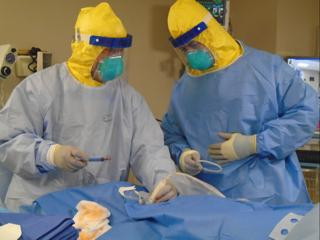
The US Centers for Disease Control and Prevention is the government institution that makes recommendations on many aspects of health care. While they have issued guidance on universal precautions to protect healthcare workers and on Ebola, there are no official guidelines for surgical care and Ebola. The American College of Surgeons has a "Surgical Protocol for Possible or Confirmed Ebola Cases."
For more about surgical care and Ebola, order a copy of Operation Ebola: Surgical Care during the West African Outbreak. It is the 3rd book in the Operation Health series of global surgery books published by JHU Press.
Sherry M. Wren, MD, FACS, FCS(ECSA), is a professor of surgery at Stanford University School of Medicine, where she is the director of global surgery for the Center for Innovation in Global Health. The director of clinical surgery at the Palo Alto Veterans Health Care System, she has worked in low-resources settings around the world. Adam L. Kushner, MD, MPH, FACS, is an associate in the Department of International Health and a faculty member in the Center for Refugee and Disaster Response at the Johns Hopkins Bloomberg School of Public Health. The founding director of Surgeons OverSeas, he has provided surgical care to patients in conflict, post-conflict, and disaster settings around the world. He is the editor of Operation Health: Surgical Care in the Developing World and Operation Crisis: Surgical Care in the Developing World during Conflict and Disaster.


